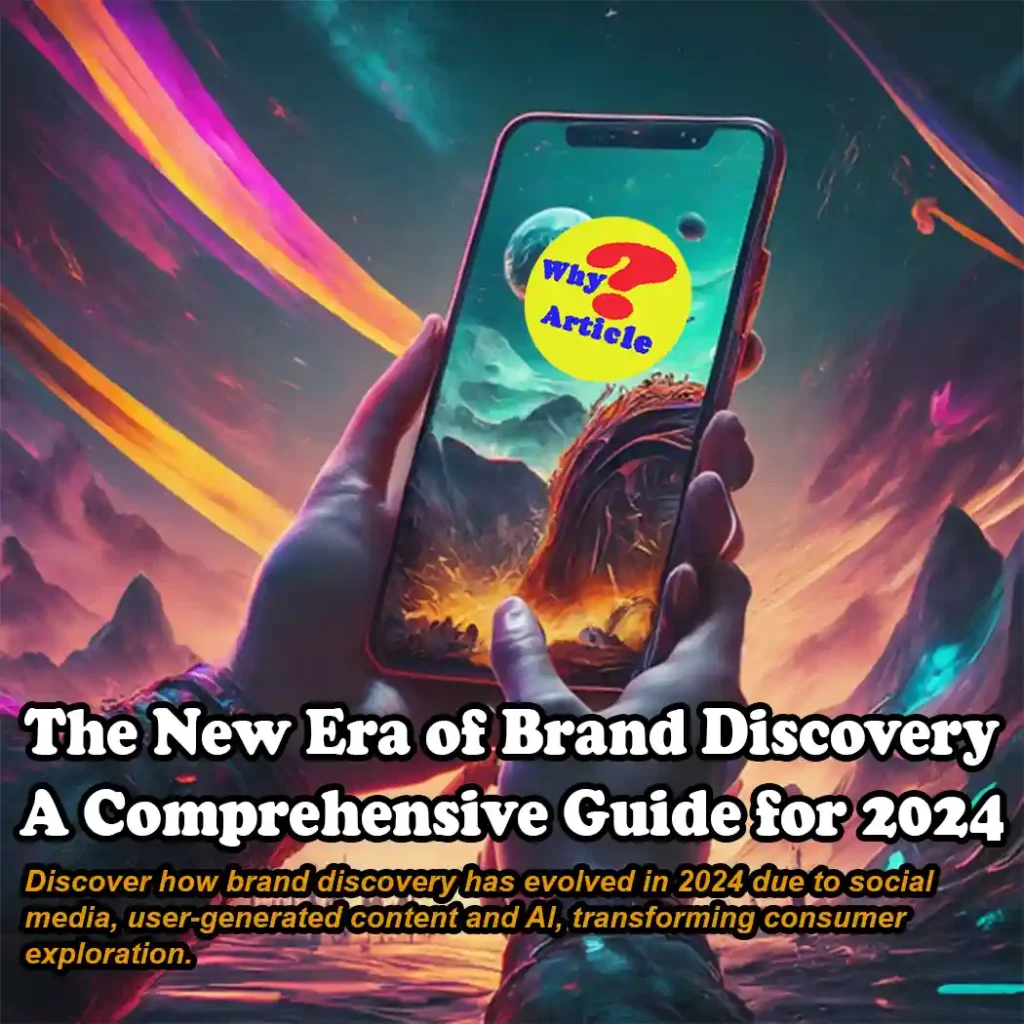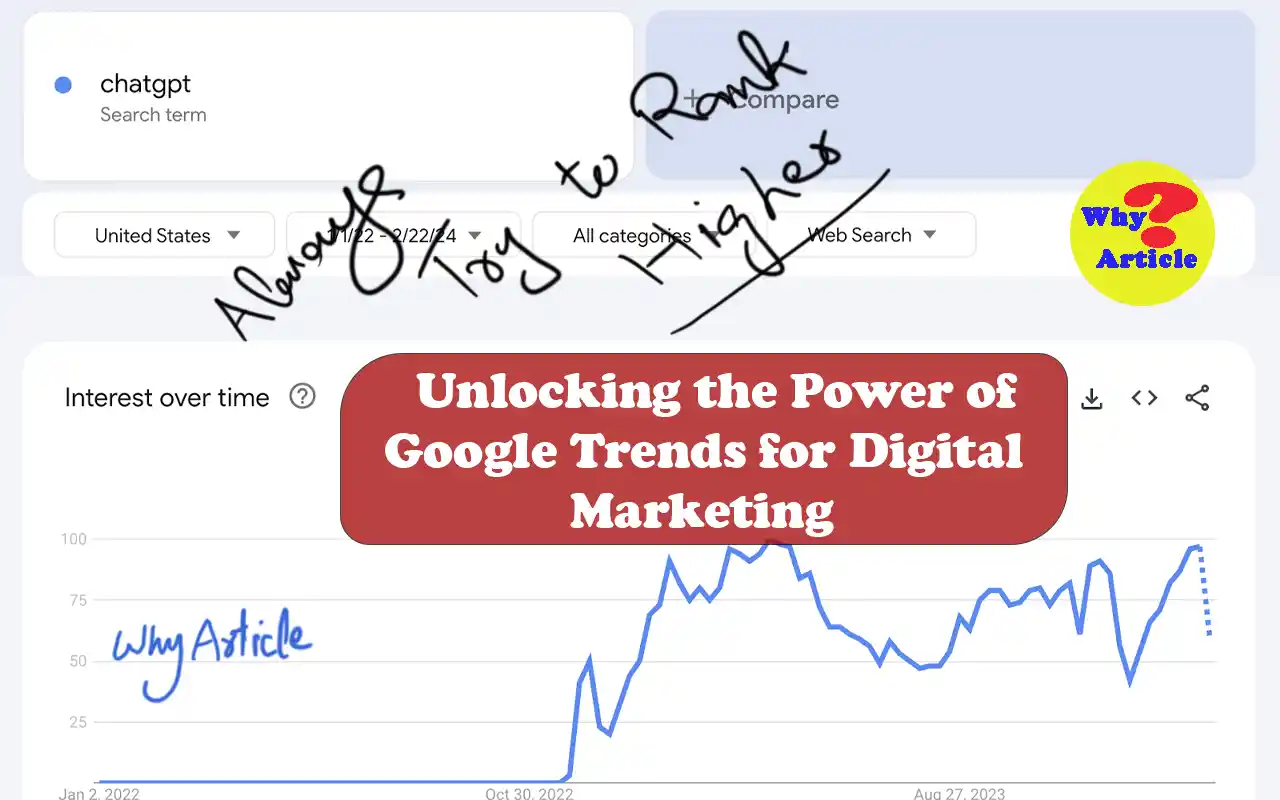In the current digital landscape, brand discovery has transformed, shifting away from traditional search engines as the sole gateway to finding new brands. Social media has emerged as a pivotal force, revolutionizing how consumers encounter and engage with brands.
This comprehensive guide delves into the intricate dynamics of brand discovery in 2024, exploring the profound impact of social media and presenting effective strategies to ensure your brand stands out in the ever-evolving digital ecosystem.
The guide begins by examining the historical evolution of brand discovery, highlighting the pivotal role played by search engines in the early days of the internet. It then analyzes the paradigm shift brought about by the advent of social media, demonstrating how platforms like Facebook, Twitter (X), Instagram, and TikTok have fundamentally altered the way consumers discover and interact with brands.
Key insights are provided into the psychological and behavioral factors that influence consumer decision-making on social media, empowering businesses to tailor their strategies accordingly.
How Do Modern Consumers Find New Products?
In the ever-evolving digital landscape, modern consumers have a plethora of options to discover new products and brands. Gone are the days when search engines were the sole gateways to product discovery.
Today, social media platforms have emerged as powerful channels for brands to connect with consumers and showcase their offerings.
Platforms like Instagram, TikTok, and Facebook have become go-to destinations for consumers seeking inspiration and making purchasing decisions.
With captivating visuals, engaging videos, and personalized content, these platforms provide a rich and immersive experience that resonates with consumers on a deeper level.
The shift towards social media as a primary product discovery channel reflects several key factors.
First, social media platforms offer a more personalized and tailored experience compared to traditional search engines. Algorithms and machine learning technologies analyze users’ behavior and preferences, curating a customized feed that displays content relevant to their interests.
This personalized touch enhances the likelihood of consumers discovering products that align with their needs and desires.
Secondly, social media platforms have become a hub of user-generated content. Influencers, bloggers, and everyday users share their experiences, reviews, and recommendations, creating a sense of trust and authenticity among consumers.
This peer-to-peer marketing approach is often more influential than traditional advertising, as it leverages the credibility of real people rather than faceless corporations.
Moreover, social media platforms provide a seamless transition from discovery to purchase. With features like in-app purchases, shoppable posts, and direct messaging, consumers can easily navigate from browsing a product to making a purchase, eliminating the need to switch between multiple platforms or websites.
This streamlined shopping experience enhances convenience and reduces friction, contributing to higher conversion rates.
How Consumers Found Brands in 2023
In 2023, consumers used a diverse range of channels to discover new brands, reflecting the evolving media landscape and the growing influence of digital platforms.
Search Engines
Search engines remained a dominant source of brand discovery, with 31% of consumers turning to platforms like Google, Bing, and Yahoo to find new products and services.
However, the rise of social media and the increasing popularity of video content have led to a shift in consumer behavior.
TV Ads
TV ads still hold a significant influence, with 30% of consumers discovering brands through traditional television advertising.
However, the impact of TV ads has declined slightly compared to previous years, as consumers spend more time on digital platforms and streaming services.
Word-of-Mouth
Word-of-mouth recommendations from friends, family, and acquaintances continue to play a vital role in brand discovery, with 27% of consumers influenced by personal recommendations.
This highlights the importance of building strong relationships with customers and creating positive brand experiences.
Social Media Ads
Social media ads have emerged as a powerful channel for brand discovery, with 27% of consumers finding brands through ads and recommendations on platforms like Instagram, TikTok and Facebook.
These platforms offer highly targeted advertising options, enabling brands to reach specific audiences based on their interests and demographics.
Brand Websites
Visiting official brand websites is another common method of brand discovery, especially for consumers who are already familiar with a particular brand or product.
Brand websites provide detailed information about products, services, and company values, allowing consumers to make informed purchasing decisions.
TV Shows and Online Ads
TV shows, movies, and online ads also play significant roles in brand discovery.
Product placements in popular TV shows and movies can create a strong association between a brand and a positive emotional experience.
Similarly, online ads on websites, search engines, and social media platforms can capture consumers’ attention and drive traffic to brand websites.
Consumer Review Sites
In addition to these traditional and digital channels, consumer review sites have become increasingly important in brand discovery.
Many consumers rely on reviews from other customers to learn about product quality, customer service, and overall brand reputation before making a purchase.
Positive reviews can significantly influence a consumer’s decision to choose a particular brand over its competitors.
Different generations prefer different methods. Gen Z loves social media ads, millennials lean towards search engines, and older generations like Gen X and baby boomers rely more on word-of-mouth and traditional media like TV.
The Rise of Social Media in Brand Discovery
Social media has revolutionized how people discover and engage with brands. For Gen Z and millennials, who are increasingly tech-savvy and visually oriented, platforms like TikTok and Instagram have become the primary channels for brand discovery.
Unlike traditional search engines, which provide static results, social media offers an immersive and interactive experience that allows users to connect with brands on a deeper level.
Social media platforms have become a powerful tool for brands to build awareness, establish a community, and drive sales. By creating compelling content, engaging with their audience, and leveraging influencer marketing, brands can effectively capture the attention of their target consumers.
For example, a fashion brand may partner with popular fashion bloggers to showcase their latest collection, reaching a large and engaged audience.
The visual nature of social media platforms makes them particularly well-suited for showcasing products and creating a strong brand identity. High-quality images, videos, and interactive content can capture users’ attention and create a lasting impression of the brand.
Brands can also leverage user-generated content, such as customer reviews and testimonials, to build credibility and trust.
Furthermore, social media offers brands valuable data and insights into consumer behavior. By analyzing user engagement metrics, such as likes, comments, and shares, brands can gain a deeper understanding of their audience’s preferences and tailor their marketing strategies accordingly
Social media listening tools can also be used to monitor conversations and identify emerging trends and pain points.
As AI continues to advance, it is increasingly being leveraged to enhance the effectiveness of social media marketing. For example, Google’s Gemini AI model, which is integrated into Google Ads, helps create more personalized and engaging ads.
By understanding what users want and tailoring the ad experience accordingly, Gemini can lead to higher conversion rates and improved ROI.
Strategies to Boost Brand Discovery in a Crowded Market
In today’s highly competitive market, where countless businesses contest for consumers’ attention, it is imperative to bolster your brand’s discoverability.
To achieve this, a combination of strategic planning and proactive implementation is required.
Here are some actionable strategies to enhance brand discovery in a crowded marketplace:
Build a Strong Social Media Presence
- Utilize Diverse Platforms: Establish a presence on a mix of social media platforms, each tailored to your target audience’s preferences. Platforms like Instagram, TikTok, Facebook, Twitter, and LinkedIn offer unique opportunities for engagement and brand visibility.
- Curate Compelling Content: Create and share content that resonates with your audience, aligning with their interests and aspirations. High-quality images, engaging videos, and informative posts help capture attention and foster a connection with potential customers.
- Foster Authentic Engagement: Engage with your followers actively by responding to comments, messages, and mentions promptly. Building genuine relationships with customers humanizes your brand and strengthens brand loyalty.
Embrace Social Commerce
- Seamless Shopping Experience: Leverage the capabilities of social media platforms that offer social commerce features. Platforms like Instagram and Facebook allow users to purchase products directly from your social media pages, creating a seamless shopping experience and minimizing the need for customers to navigate to external websites.
- Showcase Products Creatively: Utilize social commerce to showcase your products in a visually appealing and informative manner. Create product catalogs, highlight product features, and provide detailed descriptions to educate potential customers about your offerings.
- Leverage User-Generated Content: Encourage customers to share their experiences with your products by utilizing user-generated content. Positive reviews, testimonials, and images shared by satisfied customers can serve as powerful endorsements, instilling confidence in potential buyers.
Prioritize Customer Service on Social Media
- Responsive Customer Support: Monitor social media channels regularly to ensure prompt responses to customer inquiries, complaints, or feedback. Timely and empathetic customer service on social media builds trust and enhances brand reputation.
- Proactive Engagement: Be proactive in addressing customer concerns by monitoring social media mentions and hashtags related to your brand. Offer assistance, provide solutions, and demonstrate a commitment to resolving issues promptly.
- Personalize Interactions: Personalize your interactions with customers by addressing them by name and acknowledging their specific needs. A personalized touch can make a significant difference in fostering positive customer experiences.
Create Engaging Content
- Storytelling: Craft compelling brand stories that evoke emotions and resonate with your target audience. Storytelling is a powerful tool for capturing attention, building connections, and establishing a strong brand identity.
- User-Generated Content: Incorporate user-generated content into your marketing strategy. Share customer testimonials, reviews, and photos to demonstrate the value of your products or services and build trust.
- Collaborate with Influencers: Partner with influencers in your industry to leverage their audience and credibility. Influencer collaborations can help expand your reach and introduce your brand to a wider audience.
Read: Crafting a Winning Content Strategy: The Power of Clear Goals
Stay Agile and Adapt
- Monitor Industry Trends: Stay updated with the latest trends, innovations, and consumer preferences in your industry. Adapting your strategies to evolving market dynamics ensures that your brand remains relevant and competitive.
- Continuously Analyze and Refine: Regularly evaluate the effectiveness of your strategies through analytics and customer feedback. Use insights gained from data to make data-driven decisions, refine your approach, and optimize your campaigns for better results.
Frequently Asked Questions
Brand discovery has shifted from primarily using search engines to leveraging social media platforms.
People now discover brands through a variety of channels, including social media, TV ads, and word-of-mouth recommendations.
Social media platforms offer dynamic and interactive experiences, making it easier for brands to engage with consumers.
This engagement leads to deeper connections and more effective brand discovery.
To increase brand visibility, focus on building a strong social media presence, using social commerce, prioritizing customer service, creating engaging content and staying agile to adapt to new trends and consumer preferences.
Conclusion
Navigating brand discovery in today’s digital world requires a deep understanding of consumer behavior and a strategic approach to engagement. By leveraging social media, embracing new e-commerce tools, and putting customers first, brands can enhance their visibility, connect with their target audience, and drive conversions.
As technology continues to evolve, brands must stay agile and adapt their strategies to remain competitive. By harnessing the power of AI and data-driven insights, brands can create personalized and engaging experiences that resonate with consumers and foster long-lasting relationships.
Ultimately, brand discovery is about building a genuine connection with customers. By delivering exceptional customer experiences, creating compelling content, and demonstrating authenticity, brands can differentiate themselves in a crowded marketplace and establish a strong foundation for growth and success.








